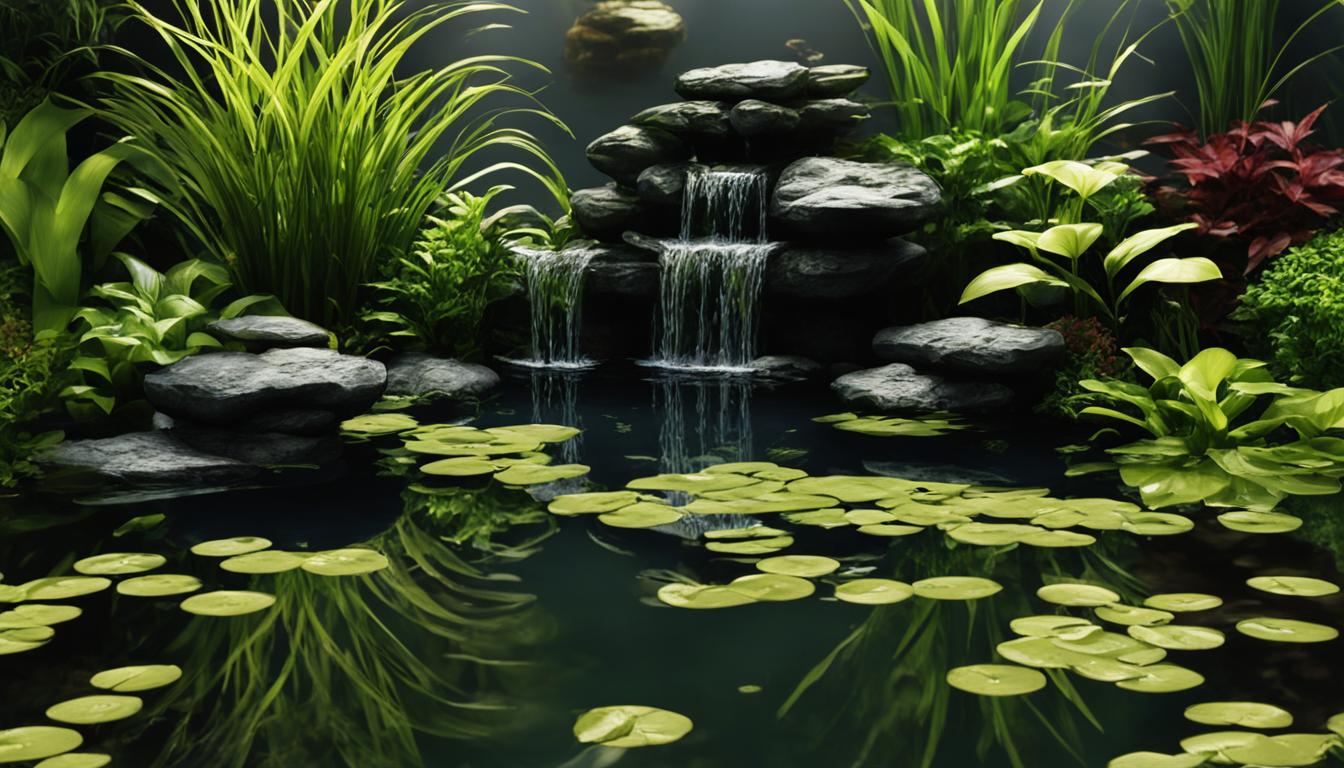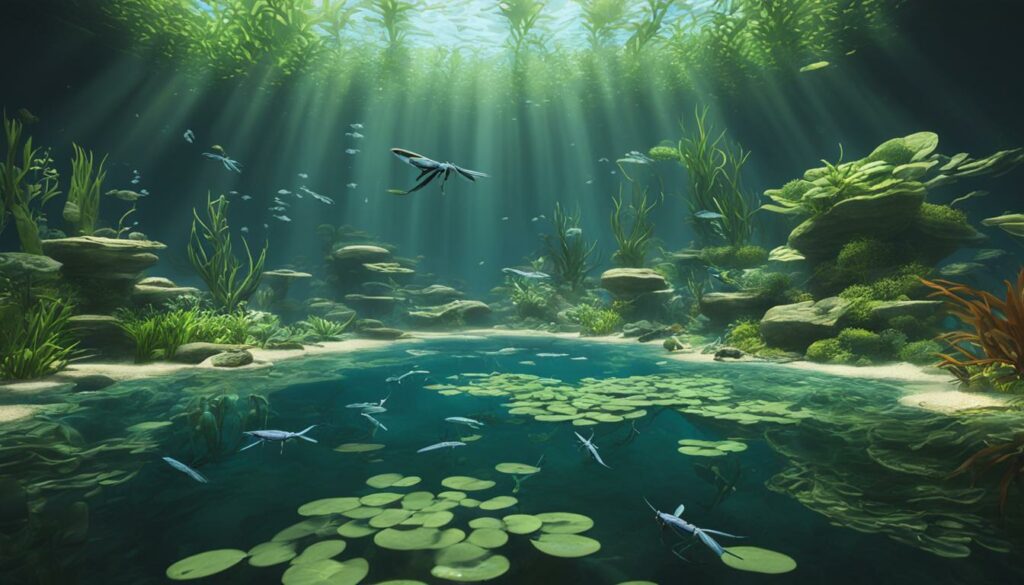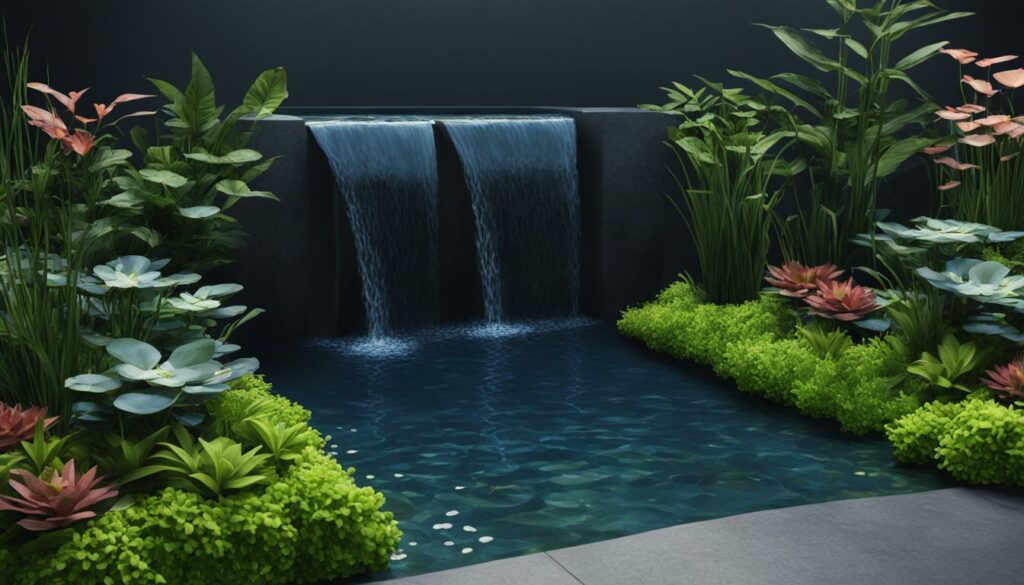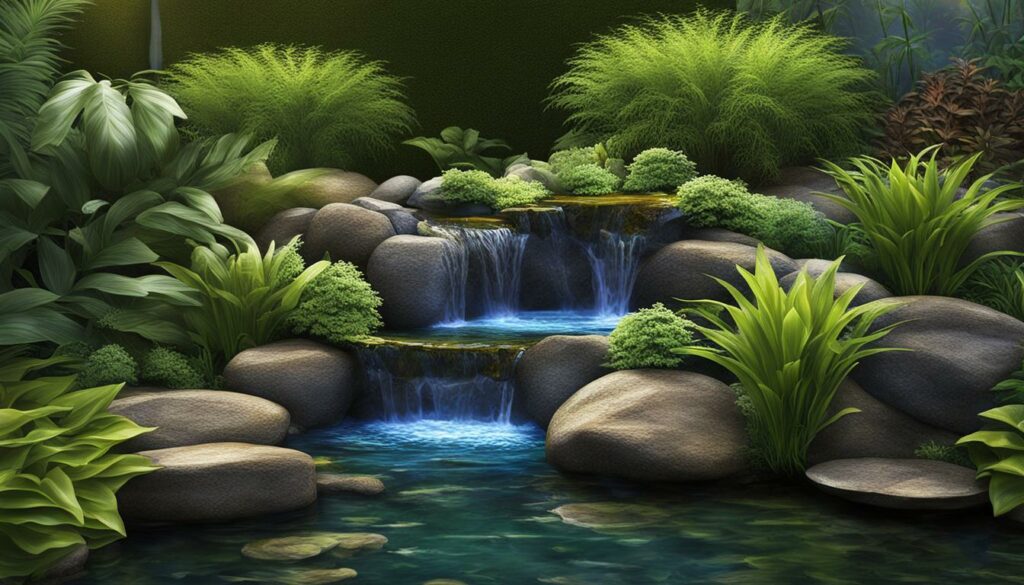
The fusion of aquatic plants into the realm of water gardens and pond design transcends mere decoration; it breathes life into the art of landscape design. These living elements are pivotal not only for their ability to enhance the visual tapestry of an outdoor space but also for their crucial role in establishing a thriving ecosystem. When one integrates a thoughtfully curated selection of pond plants, they invest in an environment that reverberates with vitality and harmony, providing a sanctuary for both the eye and the myriad of life it sustains.
Exemplifying nature’s intricate designs, the unfolding leaves of water lilies, the tranquil float of surface fauna, and the subtle yet steady growth of submerged greenery illustrate the splendor of nature’s patters. Both hobbyists and professional landscapers alike recognize the transformative power of these verdant additions. Whether tucked neatly into a quiet backyard or sprawling across a grand public display, the presence of aquatic plants can dictate the success and sustainability of a water feature’s ecological narrative.
Key Takeaways
- The strategic incorporation of aquatic plants adds aesthetic value and ecological health to water gardens.
- Optimal pond design harmonizes the beauty of aquatic flora with functional ecosystem needs.
- A diverse selection of aquatic plants can fortify the balance of oxygen levels, optimize nutrient cycling, and offer necessary habitat within a water garden.
- Landscape design involving water features with aquatic plants becomes not only more visually appealing but also environmentally sound.
- Understanding the unique roles and benefits of various pond plants elevates the design and functionality of water features.
- Aquatic plants transform a simple water feature into a dynamic and vibrant living system that supports a wide range of life.
Understanding the Ecosystem of Water Features
Delving into the world of water features reveals a complex and thriving aquatic habitat, where every plant, fish, and microorganism plays a pivotal role in the overall health and stability of the ecosystem. These aquatic landscapes are more than just ornamentation; they are dynamic environments that require balance and symbiosis between aquatic flora and fauna to maintain ecosystem balance. Below we will explore the critical roles and benefits that each component contributes to the vitality of these serene waterscapes.

The Role of Aquatic Plants in Water Ecology
Aquatic plants are not merely decorative; they serve as the backbone of a flourishing water feature. These plants engage in oxygenating the water, providing essential life support for aquatic organisms. Through the process of photosynthesis, they help maintain the dissolved oxygen levels that are crucial for fish and other living creatures. Aquatic vegetation also plays an integral part in the nutrient cycle, absorbing excess nutrients in the water that would otherwise lead to algal blooms and water quality degradation.
Benefits of a Balanced Aquatic Habitat
The intricate relationship between plants, animals, and their aquatic environment forms the cornerstone of a balanced aquatic habitat. A well-maintained habitat promotes water clarity and quality, reducing the need for chemical treatments. The diverse interactions among plants, microbes, and wildlife create a self-sustaining ecosystem that offers not only aesthetic pleasure but also serves as a haven for local wildlife, encouraging biodiversity within the garden space.
Interactions between Aquatic Flora and Fauna
- Symbiotic Relationships: Many species of fish and invertebrates rely on plants for shelter and breeding grounds, which in turn, plants benefit from the nutrient-rich waste produced by these aquatic animals.
- Predator and Prey Dynamics: Aquatic plants provide cover, affecting predator and prey interactions within the water feature and contributing to natural pest control.
- Nutritional Interdependence: The decay of aquatic plants provides food for beneficial bacteria and other microorganisms, which are, in turn, a food source for various aquatic fauna.
Understanding these vital interactions helps to ensure the longevity and beauty of your water garden, creating a tranquil and self-regulating aquatic ecosystem.
Types of Aquatic Plants for Your Pond or Water Garden
A water garden brims with life when adorned with a variety of aquatic plants varieties, each serving a unique role in your pond’s ecosystem. The visual allure of water lilies on the surface, the dynamic presence of floating plants, and the foundational contribution of submerged species, together create a harmonious and sustainable aquatic environment. In this exploration, we seek to uncover the myriad of pond plants that can enhance both the ecological balance and the aesthetic charm of your water features.
Floating atop the water’s surface, floating plants offer a natural solution for shading and can reduce algae growth by limiting light penetration. Notable for their ease of care and rapid coverage abilities, these plants, like water lettuce and duckweed, serve as natural filters, purifying the water and offering shelter to aquatic wildlife.
- Water Hyacinth: Valued for its lovely lilac flowers and robust growth.
- Frogbit: Its round, lily-pad-like leaves make it a decorative choice.
- Salvinia: Preferred for its interesting texture and floating fern appearance.
Emerging from the water’s edge, the elegant water lilies articulate a classic and timeless beauty, coming in various colors and sizes to fit the theme of any water garden. They not only carry aesthetic value but also contribute to the overall health of the pond by providing shade, which helps in controlling the temperature and inhibiting the growth of unwanted algae.
- Hardy Water Lilies: Renowned for their resilience and ability to bloom even in colder climates.
- Tropical Water Lilies: Offering vibrant colors and a tendency to bloom for extended periods.
In the depths beneath, submerged plants play an integral role in oxygenating the water and absorbing excess nutrients, helping to maintain clarity and prevent eutrophication. Common submerged plants like Hornwort and Cabomba also offer hiding spots for fish, supporting the water garden’s biodiversity.
Aquatic gardening enthusiasts often celebrate the variety and complexity that submerged, emergent, and floating plants bring to their ponds. Each type of plant contributes to the ecosystem’s health and the overall splendor one experiences in the presence of a well-designed water feature.
Selecting Aquatic Plants for Different Water Depths
Creating a thriving pond ecosystem involves more than just aesthetics; it’s about understanding the unique requirements of aquatic plants and how they interact with the water environment. Your pond plants selection should be tailored to accommodate the various water depths within your water garden, ensuring that each plant thrives and contributes to the overall health and balance of the aquatic habitat.
Plants for Shallow Margins
In the shallows, marginal plants are not merely decorative; they are crucial for bank stabilization and serve as a natural filtration system. Here’s a selection of plants that are well-suited for the marginal areas of a pond:
- Caltha palustris (Marsh Marigold)
- Iris pseudacorus (Yellow Iris)
- Lobelia cardinalis (Cardinal Flower)
These species excel in shallow water, adding color and texture, while providing essential habitat for aquatic wildlife.
Deep Water Plant Choices
For deeper waters, selecting the right deep water aquatic plants is essential for maintaining a balanced ecosystem. Deep water zones can be beautified and oxygenated by plants such as:
- Nymphaea (Water Lilies)
- Eichhornia crassipes (Water Hyacinth)
- Myriophyllum spicatum (Eurasian Watermilfoil)
Not only do these species add visual depth, but they also play a crucial role in oxygenating the pond and providing shelter for fish.
Ideal Plants for Varying Depths and Conditions
Selecting the perfect flora for your pond involves considering multiple factors beyond just water depths, such as light availability and the local climate. It is important to:
- Choose plants that can accommodate fluctuating water temperatures.
- Select species that are able to thrive with the specific sunlight exposure your pond receives.
- Consider the amount of maintenance you are willing to undertake, as some plants require more care than others.
With a well-planned selection, your water garden will flourish, creating a harmonious and sustainable aquatic paradise.

The Art of Aquascaping in Water Gardens
The process of aquascaping transforms the aquatic gardening experience into a form of living art. This intricate practice goes beyond mere pond design; it’s about creating a harmonious underwater landscape that mirrors the splendor of the natural world. Aquascaping in water gardens not only prioritizes the aesthetic aspects but also ensures each element contributes to a balanced and thriving ecosystem.

Successful aquascaping hinges on understanding the interplay between space, texture, and color. By carefully selecting and strategically positioning plants, stones, driftwood, and other natural materials, hobbyists can craft an aquatic tableau that is both visually engaging and ecologically sound. Here are some techniques integral to the craft of aquascaping:
- Layering: Creating depth by placing taller plants in the back and shorter ones towards the front.
- Color Contrast: Utilizing a mix of plant species to add vibrant contrasts and subtle shades.
- Balance: Arranging components symmetrically or asymmetrically to evoke a sense of calm and composition.
- Focus Points: Designing one or more central elements that draw the eye.
While the beauty of aquascaping is undeniable, its benefits extend beyond the aesthetic. Aquascaping plays a key role in the maintenance of healthy water gardens by:
- Enhancing water quality through the careful selection of plants that filter and oxygenate the water.
- Providing natural habitats for fish and beneficial microorganisms that contribute to the garden’s biodiversity.
- Ensuring optimal light exposure and circulation, which are critical to plant and animal life.
The serene allure of a well-planned aquascape offers not just a spectacle for the eyes but a vibrant, sustainable ecosystem. It turns pond design into an opportunity for ecological stewardship and artistic expression, inviting nature lovers and garden enthusiasts to engage with the living canvas of aquatic gardening. Mastering the art of aquascaping not only revitalizes water gardens, it redefines them as dynamic, immersive works of art.
Aquatic Plants Maintenance and Care
Ensuring the health and vibrancy of your water garden or pond design involves more than just the initial selection and planting of aquatic flora. Effective maintenance and care of these plants are essential for preserving the aesthetic charm and ecological balance of your water feature. Regular pruning, seasonal care, and vigilance against pests and diseases are all pivotal practices that contribute to a flourishing aquatic environment. In this section, we delve into practical strategies for sustaining thriving aquatic plants.
Pruning and Controlling Plant Growth
Pruning aquatic plants not only helps in maintaining a neat and orderly appearance but also prevents overpopulation that can lead to oxygen depletion and subsequent harm to aquatic life. Routine trimming allows sunlight to penetrate effectively and reduces the chances of algae proliferation. Effective management of plant growth requires an understanding of each species’ growth pattern and timely intervention to clip or thin out foliage, ensuring sustained health and vitality of the pond’s ecosystem.
Seasonal Care for Aquatic Plants
Seasonal pond care is of paramount importance as different times of the year demand varying levels of attention and action. Transitioning plants during spring involves cleaning and dividing them to encourage robust growth. Summer may require increased surveillance for evaporation and overgrowth, while autumn is crucial for removing decaying matter to prevent nutrient build-up. As winter approaches, hardy plants may need to be submerged to protect them from freezing temperatures, and tropical species stored inside to await warmer weather.
Common Pests and Problems in Water Features
Just like any garden, water features are susceptible to pests and diseases that can compromise plant health. Vigilant monitoring can help in identifying issues like snail infestations or the presence of aphids early on. Integrated Pest Management (IPM) practices, which include biological controls and safe, targeted treatments, are recommended to address these concerns while maintaining the ecological integrity of your water garden. Proactive measures can significantly mitigate the impact of water feature pests, ensuring your aquatic plants remain the crowning jewels of your landscape design.








